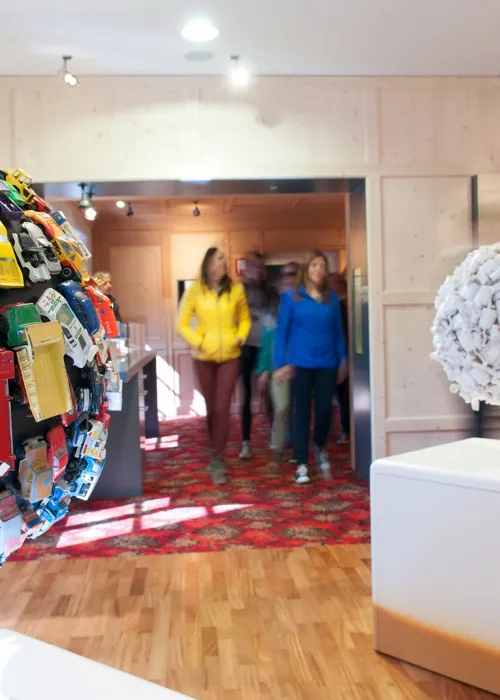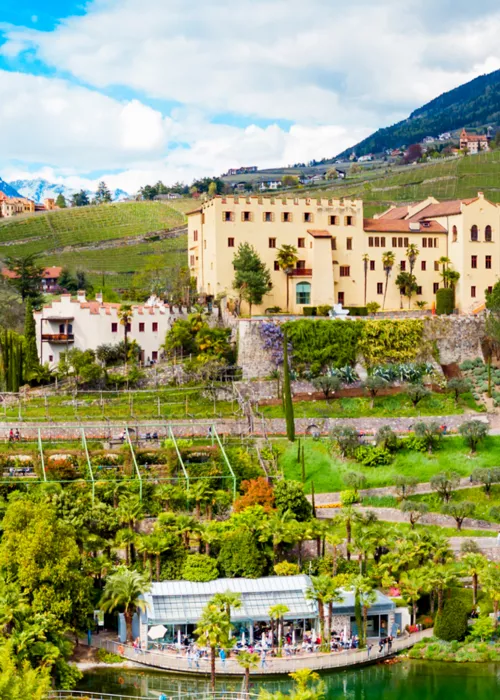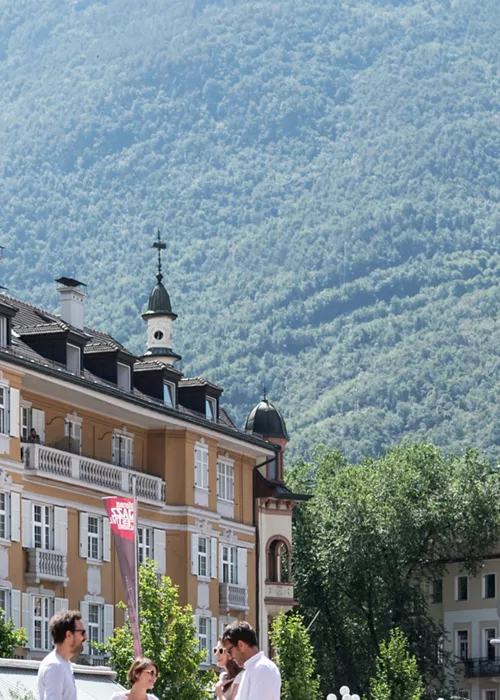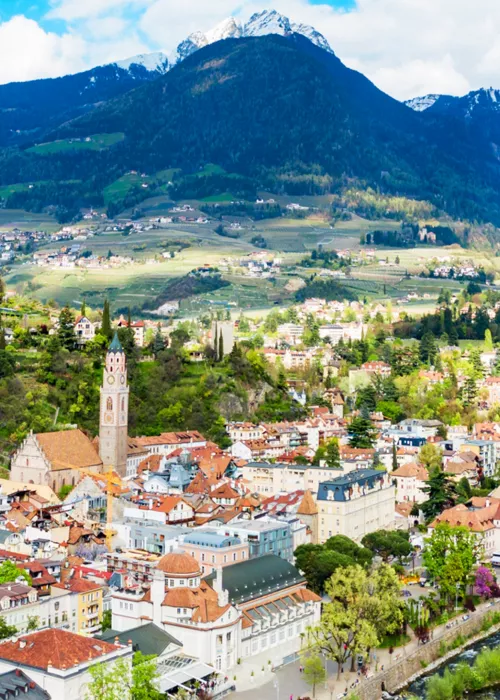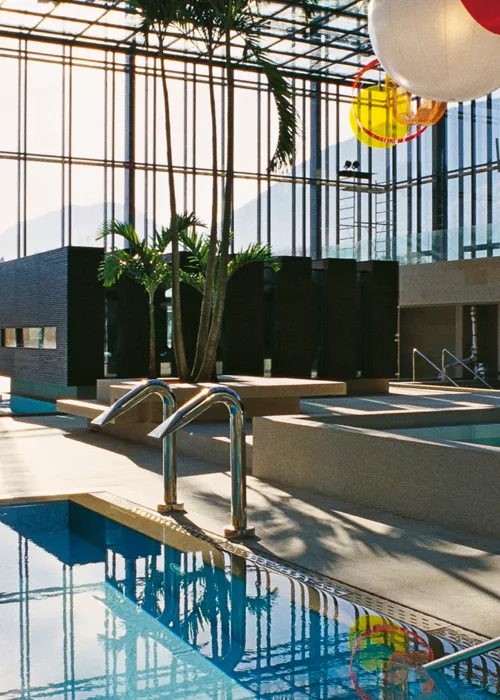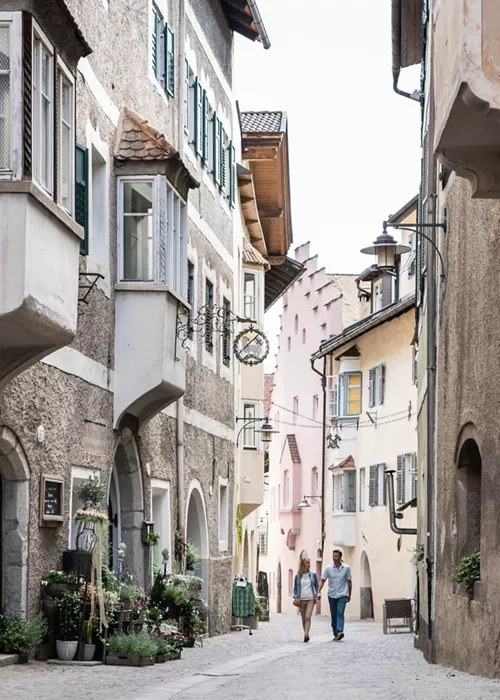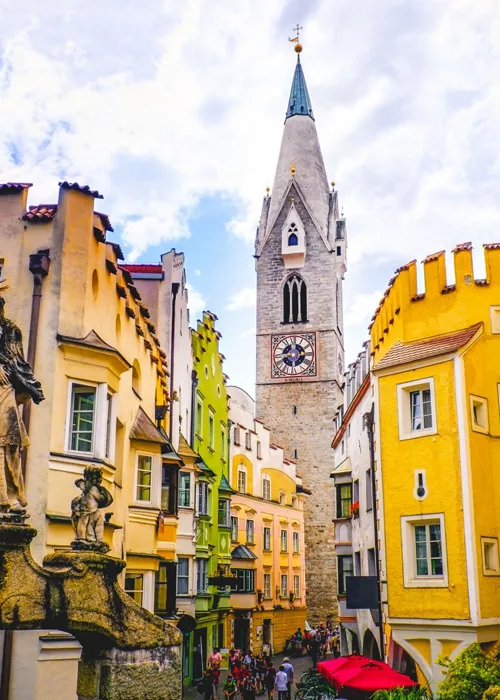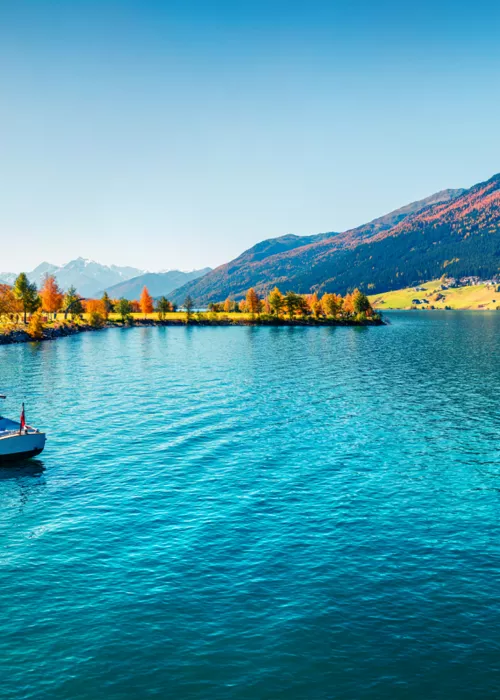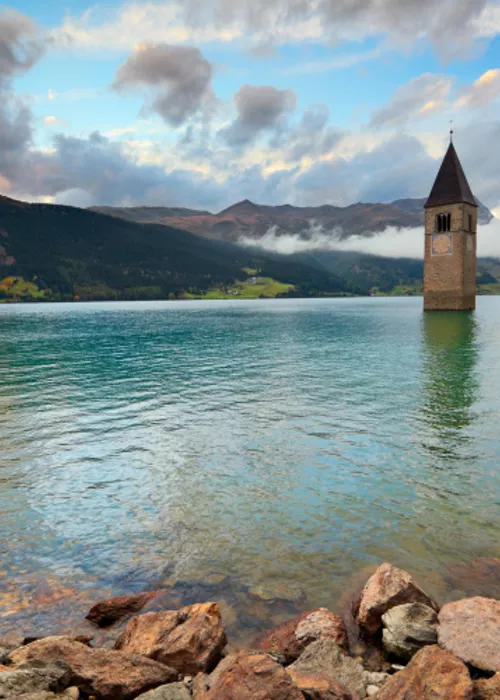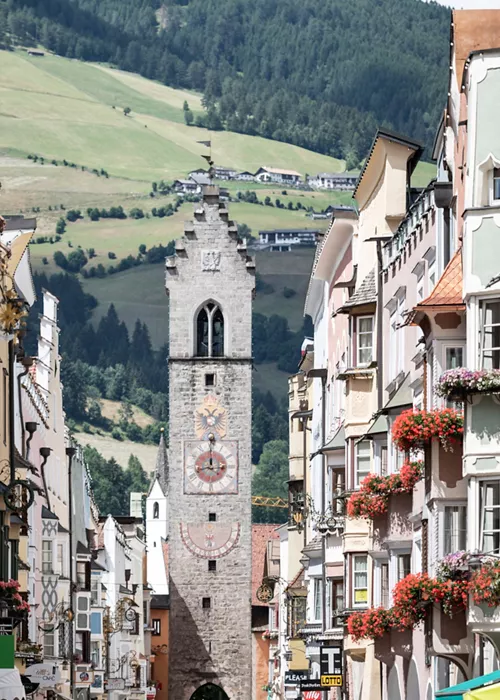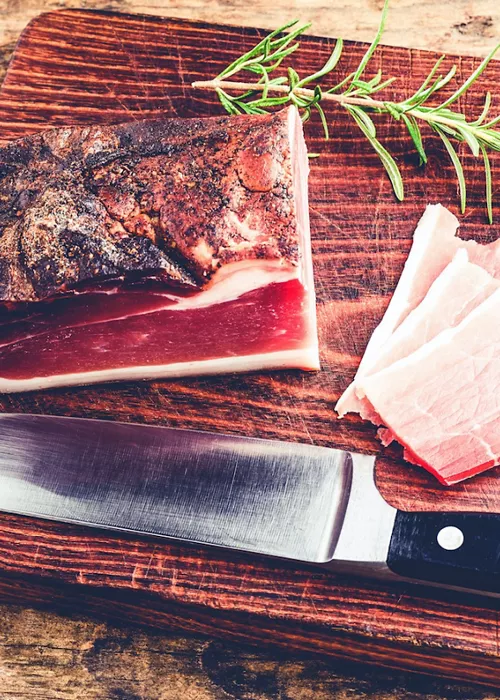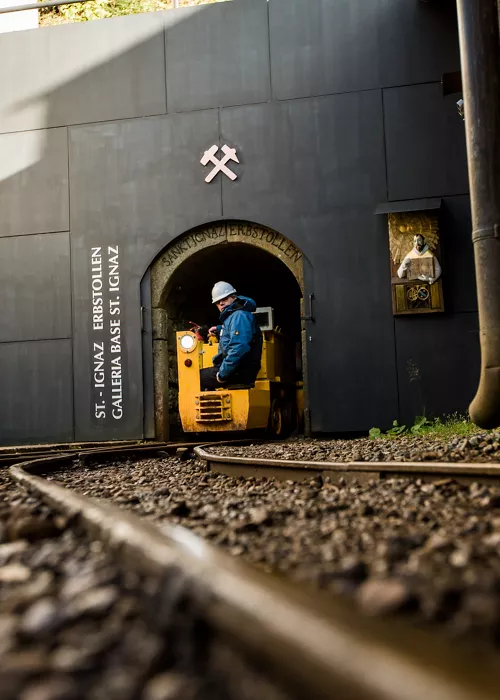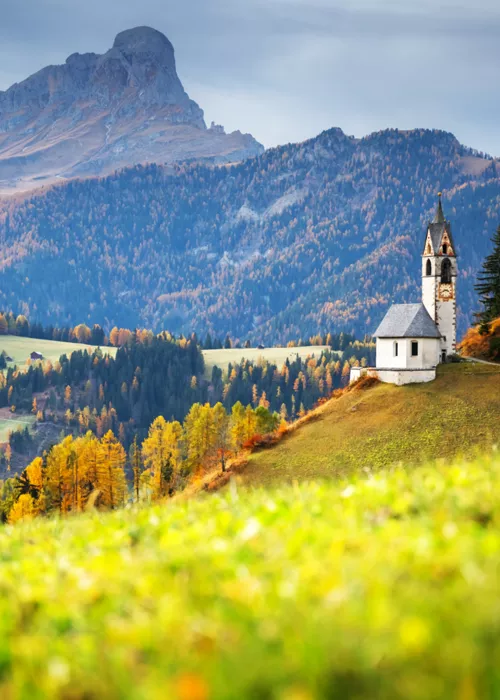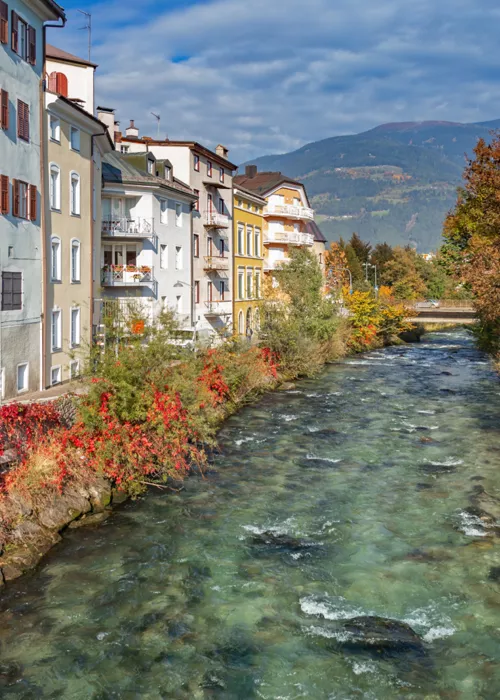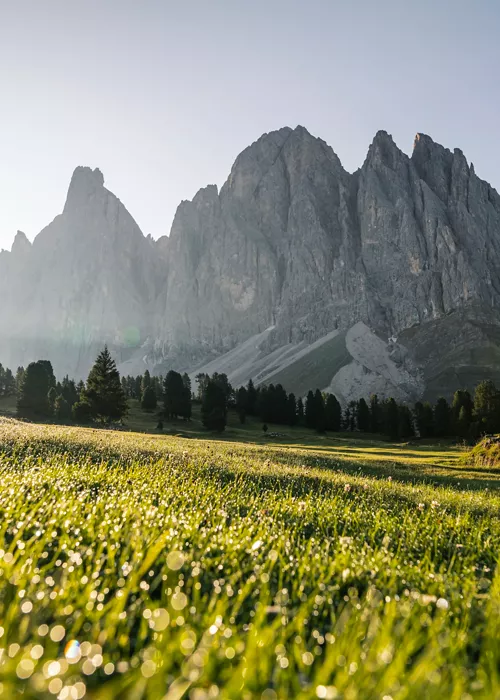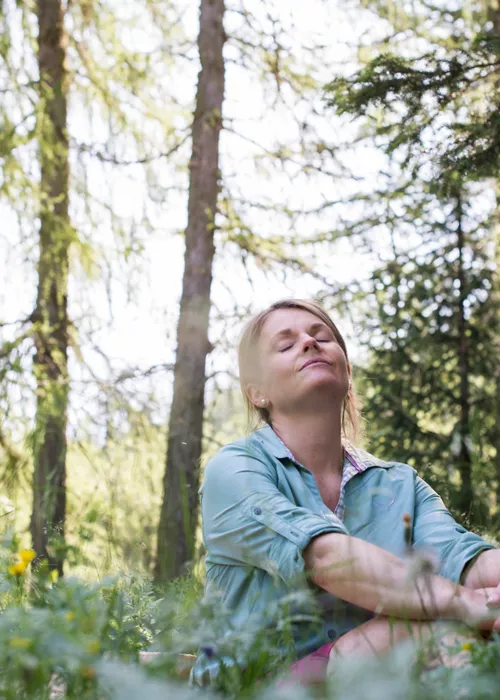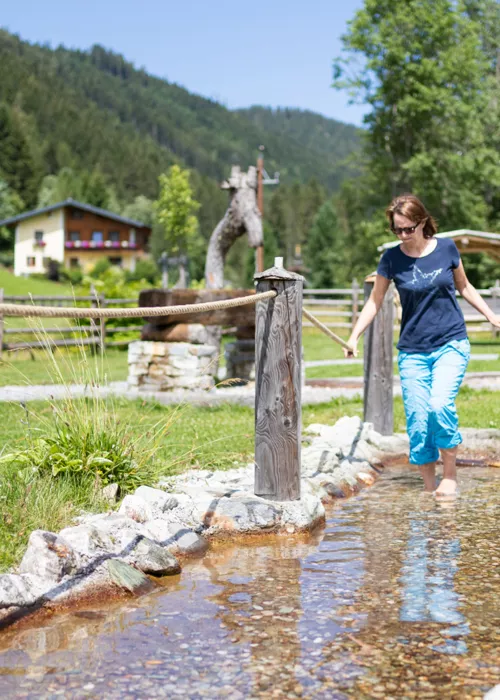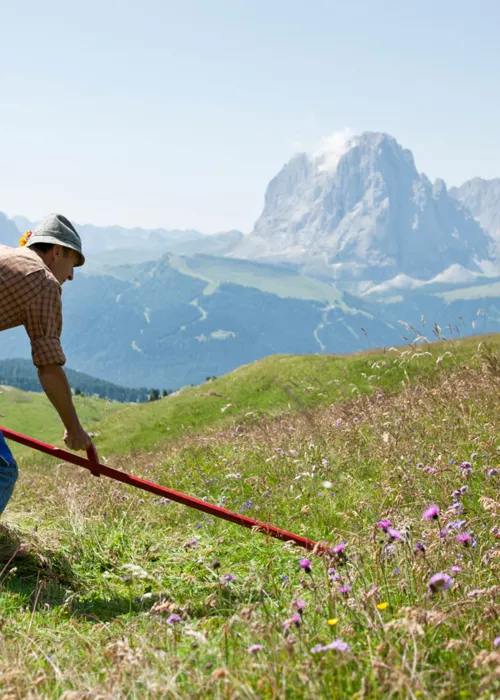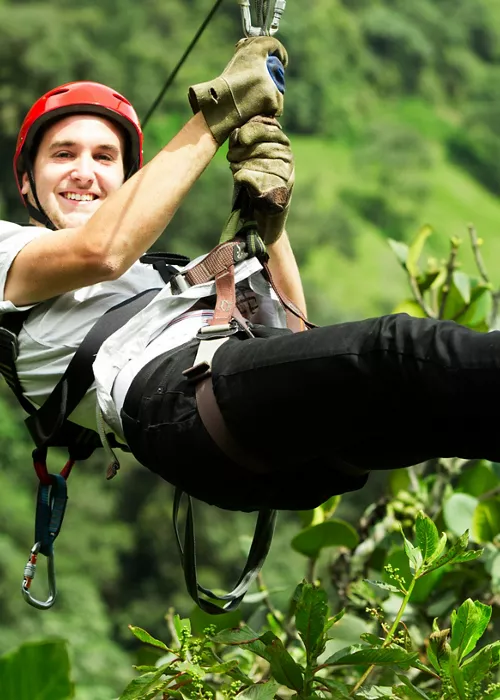Alto Adige: Merano amid castles, Art Nouveau buildings and spas
3 minutes
Visiting it is a pleasure, for its rich vegetation, as well as for its architecture, from the castles and medieval porticoes to the Art Nouveau buildings and the more modern cubic building of the thermal baths.
We propose a tour of the city, a mix of the Belle Époque and the contemporary, which will show you a new soul.
Trauttmansdorff Castle and Botanical Gardens
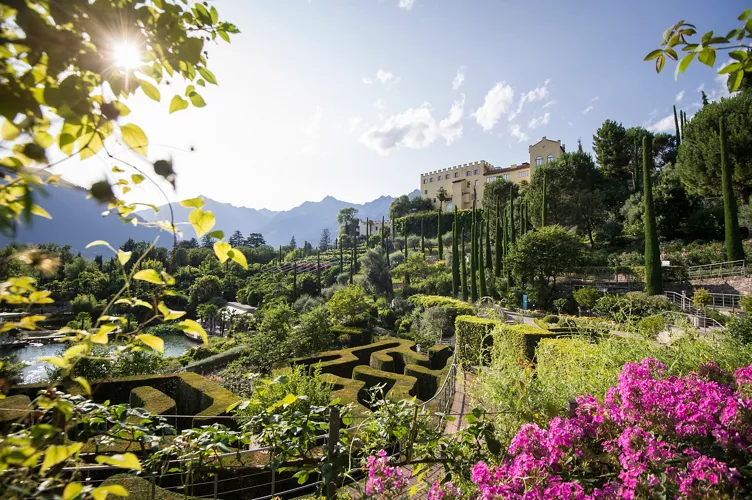
Even Princess Sissi, Empress of Austria, stayed here. It is the mighty Trauttmansdorff Castle, originally a fortress, later transformed and enlarged in the first half of the 16th century by the noble family from which it gets its name.
The building, now home to the Alpine arch museum dedicated to the history of tourism, the Touriseum, fascinates with its architecture, enriched over time with neo-Gothic elements, and with the fact that it looks like a natural amphitheatre on a 12-hectare flower-filled expanse. Surrounding the castle are the colourful Botanical Gardens, with no fewer than 80 varieties of plants, including exotic and Mediterranean. A spectacle for the eyes, blending in with the snow-capped peaks. All visible from the rooms of the castle.
Tyrol Castle: Cultural History Museum and Memorial Tower in the keep
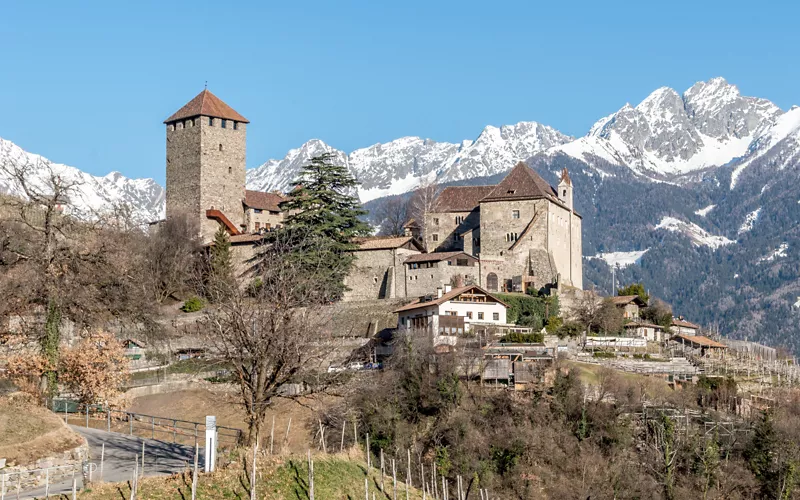
Dominating the city from above is the Tyrol Castle, the historic residence of the Counts of Tyrol who named the entire region in which it stands. More than nine centuries of construction phases and the surrounding wall, among the oldest in history, make this structure a valuable testimony to the past.
Today, the castle houses the Cultural History Museum of the Province of Bozen/Bolzano, where you can visit the southern palace with its famous Romanesque portals, the frescoes in the two-storey chapel and the wedding chamber of Margaret of Tyrol-Gorizia.
Worthy of special attention is the donjon with its Memorial Tower, which presents a permanent exhibition on the history of South Tyrol, which can also be visited via a virtual tour.
Medieval porticoes: Merano's merchant street
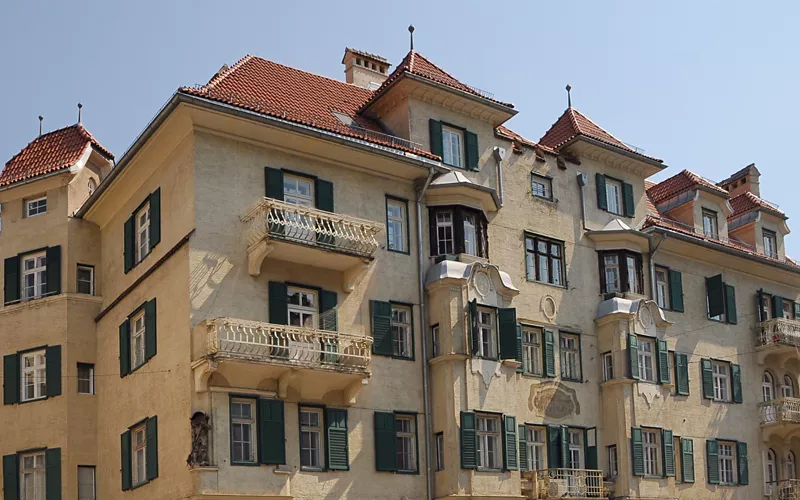
A double, low arched corridor supported by stone columns. This is Merano's Via dei Portici, the nerve centre of the town's medieval trade.
The porticoes stretch for about 400 metres, from Piazza Duomo to Piazza del Grano and have façades decorated with ornaments of different styles.
Packed with shops, they retain their former mercantile nature and are now a true shopper's paradise: under the medieval porticoes, you can indulge in textiles and foodstuffs, handicrafts and clothing, but also satiate your appetite in the many bars, pubs and restaurants.
Kurhaus: elegance and charm in Art Nouveau style
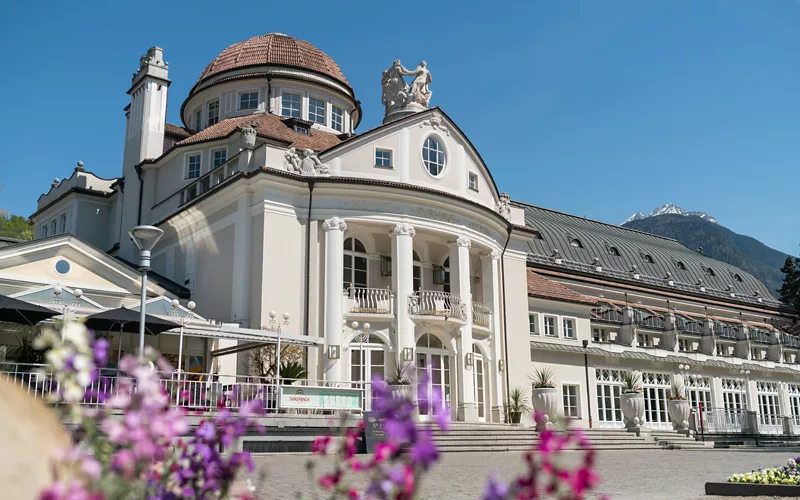
Among the symbols of the South Tyrolean city is the Kurhaus, one of the most famous Art Nouveau masterpieces in the entire Alpine area.
Overlooking the Passer Promenade in the centre of Merano, an attractive location. The dome, the large terrace and the Three Graces on the roof lend elegance to the exterior; the majestic interior staircase, the sumptuous Kursaal hall with its frescoed ceiling, the Rotunda and the gallery make it a suitable site for conventions, concerts and more. During Advent, the Kurhaus is transformed into the atmospheric backdrop of the Christmas Market.
Terme Merano: care, nature, wellness
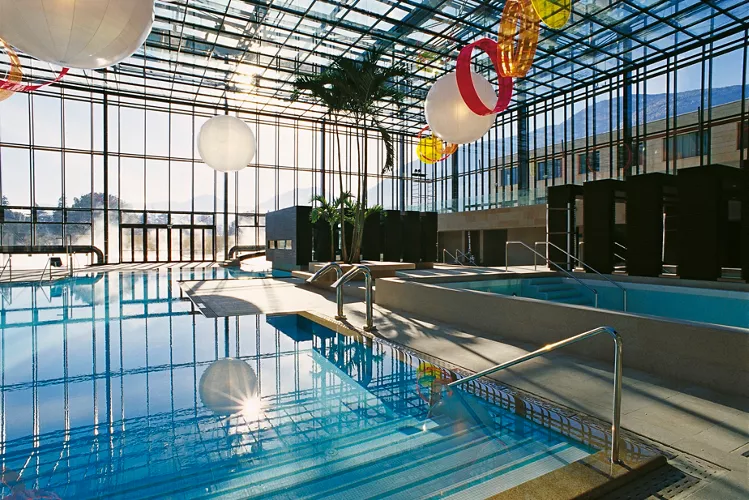
Although it is a modern building with an original cubic plan of glass and steel, it blends harmoniously into its surroundings. Merano Thermal Baths, located on the south bank of the River Passer, much more than just a wellness centre. Immersed in nature, set in a 50,000 square metre park, amidst ancient trees, palm trees and rose gardens.
It is the transparency of the structure that allows a close connection between the inside and the outside environment, also providing a refreshing view of the surrounding mountains.
All treatments are made from local products: apples, grapes, hay, whey, wool and chestnut.


